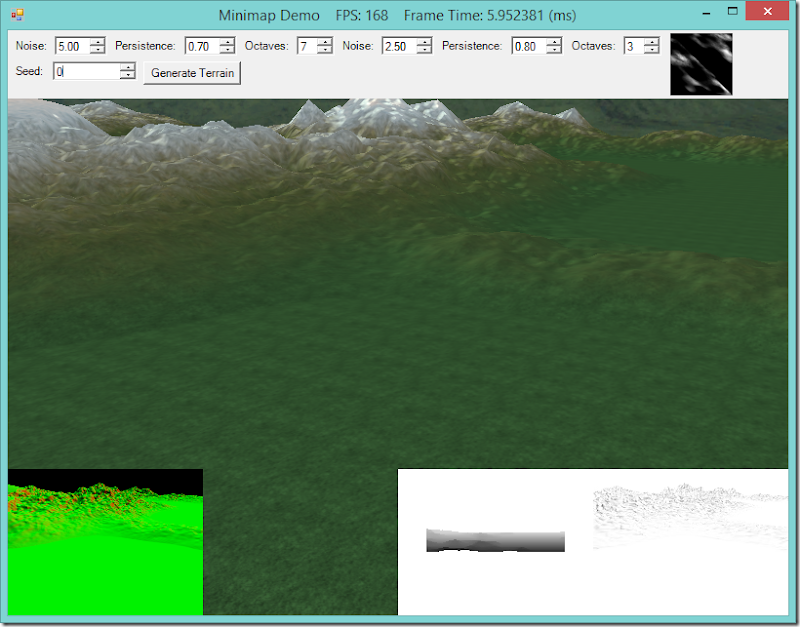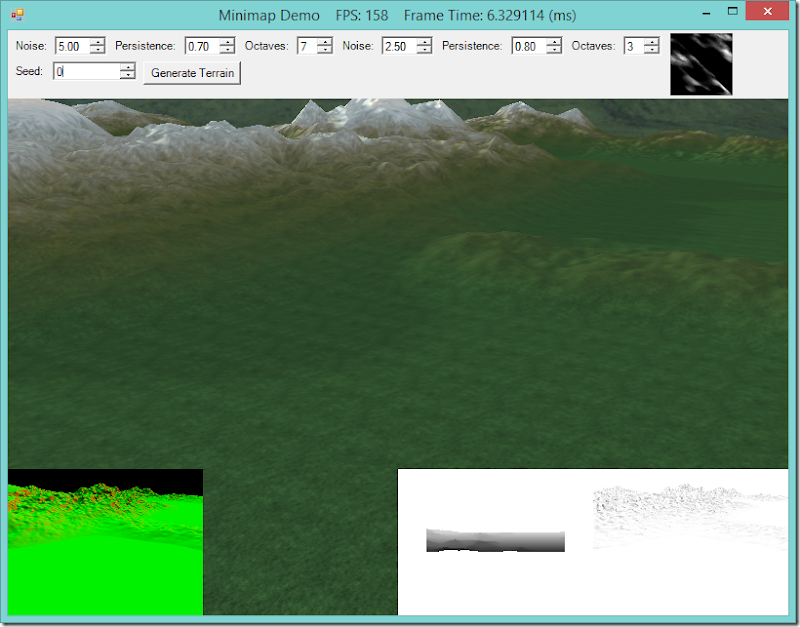Now that I’m finished up with everything that I wanted to cover from Frank Luna’s Introduction to 3D Game Programming with Direct3D 11.0 , I want to spend some time improving the Terrain class that we introduced earlier. My ultimate goal is to create a two tiered strategy game, with a turn-based strategic level and either a turn-based or real-time tactical level. My favorite games have always been these kinds of strategic/tactical hybrids, such as (in roughly chronological order) Centurion: Defender of Rome, Lords of the Realm, Close Combat and the Total War series. In all of these games, the tactical combat is one of the main highlights of gameplay, and so the terrain that that combat occurs upon is very important, both aesthetically and for gameplay.
Or first step will be to incorporate some of the graphical improvements that we have recently implemented into our terrain rendering. We will be adding shadow-mapping and SSAO support to the terrain in this installment. In the screenshots below, we have our light source (the sun) low on the horizon behind the mountain range. The first shot shows our current Terrain rendering result, with no shadows or ambient occlusion. In the second, shadows have been added, which in addition to just showing shadows, has dulled down a lot of the odd-looking highlights in the first shot. The final shot shows both shadow-mapping and ambient occlusion applied to the terrain. The ambient occlusion adds a little more detail to the scene; regardless of it’s accuracy, I kind of like the effect, just to noise up the textures applied to the terrain, although I may tweak it a bit to lighten the darker spots up a bit.
We are going to need to add another set of effect techniques to our shader effect, to support shadow mapping, as well as a technique to draw to the shadow map, and another technique to draw the normal/depth map for SSAO. For the latter two techniques, we will need to implement a new hull shader, since I would like to have the shadow maps and normal-depth maps match the fully-tessellated geometry; using the normal hull shader that dynamically tessellates may result in shadows that change shape as you move around the map. For the normal/depth technique, we will also need to implement a new pixel shader. Our domain shader is also going to need to be updated, so that it create the texture coordinates for sampling both the shadow map and the ssao map, and our pixel shader will need to be updated to do the shadow and ambient occlusion calculations.
This sounds like a lot of work, but really, it is mostly a matter of adapting what we have already done. As always, you can download my full code for this example from GitHub at https://github.com/ericrrichards/dx11.git. This example doesn’t really have a stand-alone project, as it came about as I was on my way to implementing a minimap, and thus these techniques are showcased as part of the Minimap project.




